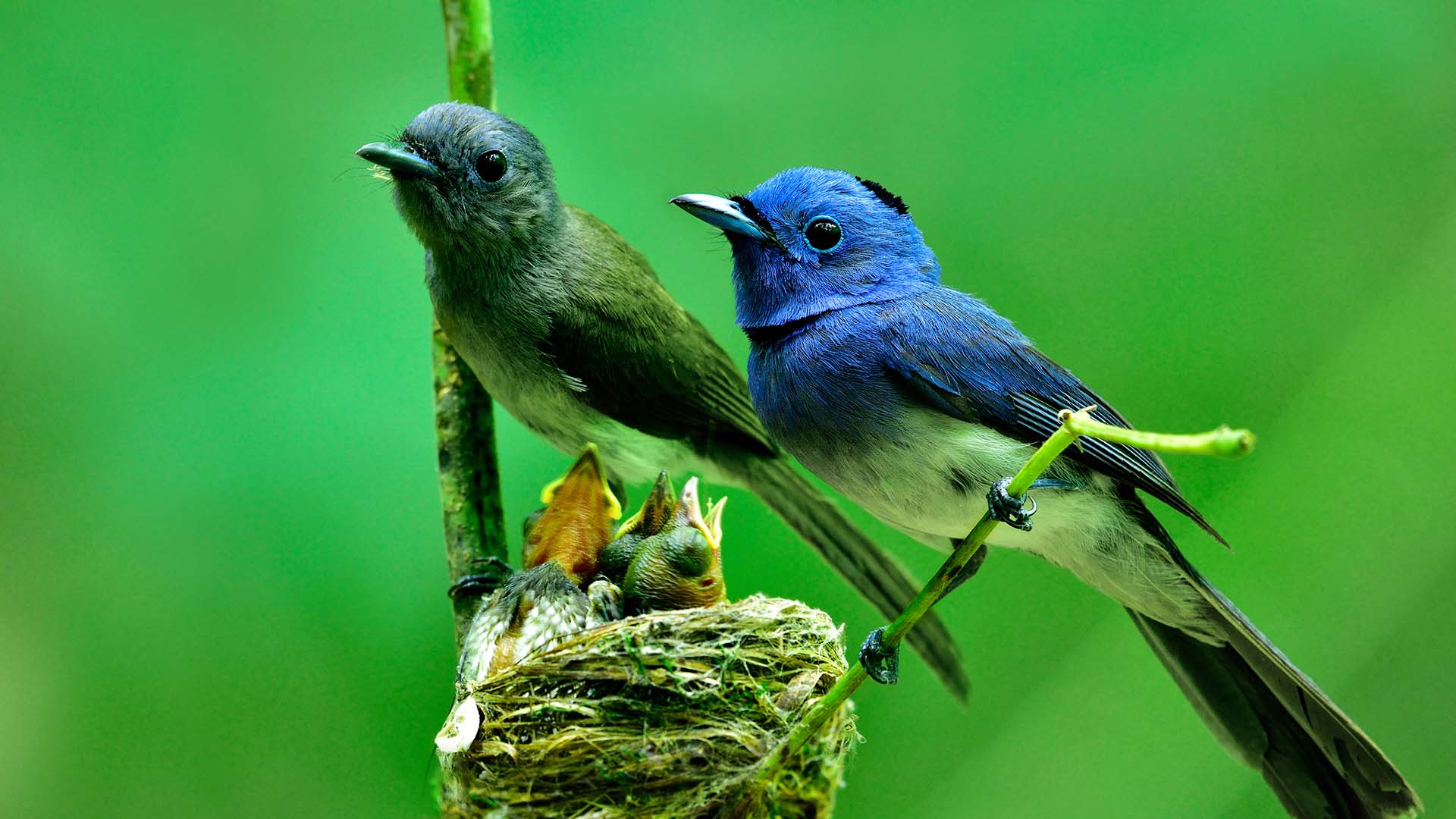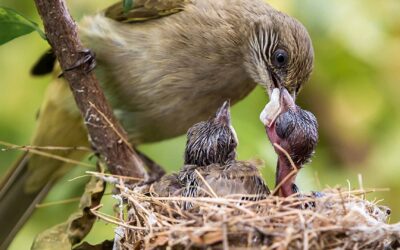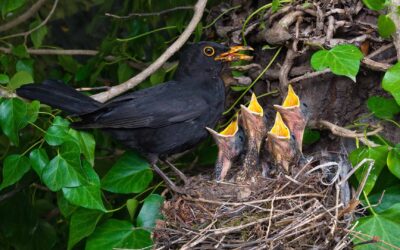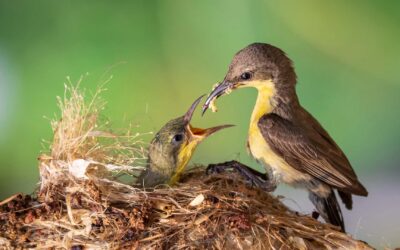A Jungle Nest Full of Surprises
Deep in the lush forests of South and Southeast Asia, something magical happens in the treetops: the arrival of baby Black-naped Monarchs! 👑🐦 In this snapshot, we see a hardworking pair of adult monarchs tending to their nest of newly hatched chicks. The nest itself is a tiny masterpiece—cup-shaped, expertly woven with spider silk, and perched on a slim branch like a high-rise baby crib in the jungle.
Meet the Baby Black-naped Monarch
With their barely-feathered heads, wide-open beaks, and eyes sealed shut, these baby Black-naped Monarchs rely completely on their parents for warmth, food, and protection. The bright blue male and the more modest grayish-brown female take turns feeding them tiny insects and guarding the nest like royal sentries.
Baby Black-naped Monarchs grow fast!
- They hatch just 11–14 days after the eggs are laid
- In only about 10 days, their eyes open and fuzzy down gives way to feathers
- By 12–15 days old, they’re ready to fledge—that means flying off into the forest!
The King and Queen of the Canopy
These birds aren’t just beautiful—they’re clever, too. The male’s deep cobalt coloring helps him stand out when defending territory or wooing a mate, while the female’s muted tones help her stay camouflaged on the nest. Talk about a power couple!
Did You Know?
- Black-naped Monarchs are part of the monarch flycatcher family and are insectivores—they love snacking on flies, moths, and even tiny spiders!
- They often reuse the same nesting spot from year to year
- The male sometimes fluffs up his head feathers into a tiny crest when excited or on alert
How to Tell a Black-naped Monarch from Similar Birds
Don’t confuse these beauties with other forest flycatchers! The male Black-naped Monarch has a distinctive black crescent on the back of his head (that’s the “black nape”), bright blue plumage, and a dainty black beak. The female is subtler in color but shares the same elegant shape. Their nest is also a giveaway—perfectly symmetrical and decorated with lichen and silk, often dangling like an ornament from a slender twig.
Feathered Finds for Curious Bird Lovers
Want to learn more about backyard birds or track your own feathered visitors?
- National Geographic Kids Bird Guide of North America – A fun, colorful bird book packed with facts for curious young naturalists!
- Decorate Your Own Window Bird Feeder Craft Kit – Attract and observe wild birds up close, right from your home!
Keep Your Eyes on the Trees!
Next time you walk near a forest or garden, imagine the tiny drama unfolding above—nests tucked into branches, babies chirping for their next snack, and parents flying back and forth with food. Even the smallest birds have a big story to tell. 🌿🐣 What birds are nesting near you this season?
For more information about the Black-naped Monarch, check out the eBird species guide or dive into regional data from BirdLife International.




